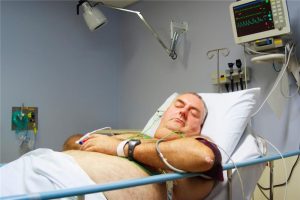
The FDA has approved Skytrofa (lonapegsomatropin -tcgd) for use in adults with Growth hormone deficiency (GHD) as a hormone replenishment therapy. A pegylated prodrug of somatropin (recombinant human growth hormone), lonsapegsomatropin, is intended for once-weekly subcutaneous administration. It is engineered to deliver a sustained release of active, unmodified somatropin.
The drug had previously been approved for the treatment of pediatric patients aged one year and older, weighing at least 11.5kg, who have growth failure due to insufficient secretion of endogenous growth hormone.
Approval for adult GHD was based on data from a randomized, parallel-group study, including the foresight trial, an active-controlled study. The study enrolled 259 participants aged 23-81 years during the trial. All participants were randomly assigned in a 1:1:1 ratio to receive either once-daily somatropin (n=86), once-weekly lonapegsomatropin (n=89), or once-weekly placebo (n=84). The main measure was the change in the percentage of trunk fat from baseline to week 38, measured using dual-energy X-ray absorptiometry (DXA).
Results showed a statistically significant decrease in percentage fat of trunk with lonapegsomatropin compared to placebo ( -1.7 percent versus 0.4 percent, respectively), with the difference found to be -2.0 % (95 percent confidence interval (CI) -2.9 to -1.1; P < 0.0001). There was no formal statistical comparison conducted between weekly and daily lonapegsomatropin and daily somatropin.
An increase of 1.6 kg in total body lean mass was observed in patients treated with lonapegsomatropin, which was a secondary endpoint. In comparison, a slight decrease of 0.1 kg was observed in patients treated with a placebo at week 38. The mean difference between the participating groups was determined as 1.7 kg (95% Confidence Interval, 1.0 to 2.5; P < 0.0001). The other secondary endpoint, change in trunk fat mass from baseline, was observed in a reduction of 0.5 kg in the population using lonapegsomatropin group, compared to an increase of 0.2 kg in the placebo group, resulting in a difference of -0.7 kg (95% CI, -1.2 to -0.2; P = 0.005).
The baseline mean insulin-like growth factor-1 (IGF-1) standard deviation score (SDS) in the lonapegsomatropin group was -2.6 (±1.0) compared to -2.7 (±1.2) in the placebo group. By week 38, the level of IGF-1 SDS normalized in the lonapegsomatropin group (1.4 ± 1.9), while remaining low in the placebo group (-2.6 ± 1.3).
Commenting on the approval, Jan Mikkelsen, President and CEO of Ascendis Pharma, said that the market result demonstrates that both physicians and patients favor Skytrofa as the most desirable medication in treating children with GHD.
He stated that he was happy with the decision to increase its applications in the U.S. to include adults, both those initiating growth hormone therapy and those transitioning from other treatments. In the case of adult patients, the initial dosage of the Skytrofa drug will be determined depending on factors like age and concomitant oral estrogen use. Adjustment of dosage must be provided in monthly increments following clinical results and/or IGF-1 values on a weekly basis.
Skytrofa is supplied as a single-dose, two-chamber preloaded cartridge, containing lonapegsomatropin-tcgd and a diluent. It is available in 14 cartridge strengths (in somatropin equivalents) for adult use, with the appropriate cartridge selected based on the patient’s weekly (mg/week) dosage.
References: Jaymin Kang. FDA Approves Skytrofa for Adults With Growth Hormone Deficiency. Published July 28, 2025. Accessed July 30, 2025. FDA Approves Skytrofa for Adults With Growth Hormone Deficiency – MPR














